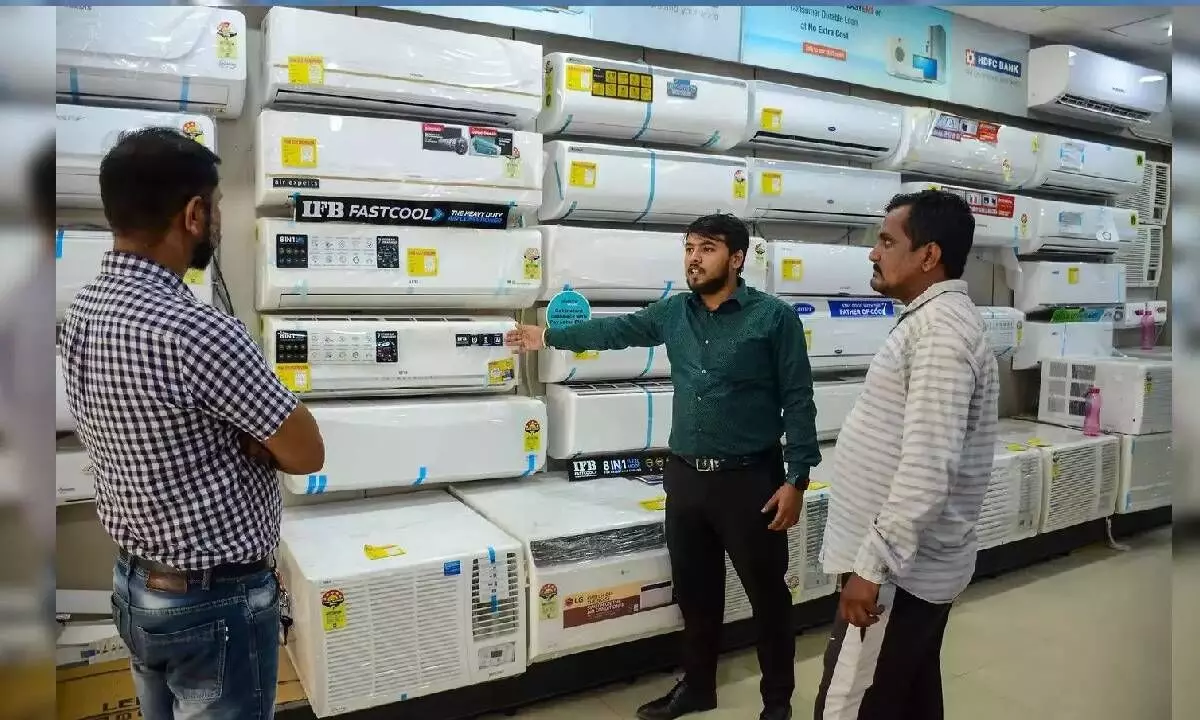Demand for electricity for ACs to exceed 9-fold by 2050
Air conditioner ownership in India has tripled since 2010 to reach 24 units per 100 households: IEA
image for illustrative purpose

New Delhi India’s demand for electricity for running household air conditioners is estimated to expand nine-fold by 2050 and will exceed total power consumption in the whole of Africa in current times, the International Energy Agency (IEA) said on Tuesday. In its latest World Energy Outlook, IEA said India will see the largest energy demand growth of any country or region in the world over the next three decades. It projected India’s energy supply to rise from 42 exajoules (EJ) in 2022 to 53.7 EJ in 2030 and 73 EJ in 2050 under stated policies scenarios and 47.6 EJ by 2030 and 60.3 EJ by 2050 as per announced pledges. Oil demand is seen a rise from 5.2 million barrels per day (bpd) in 2022 to 6.8 million bpd in 2030 and 7.8 million bpd in 2050 under stated policies scenario. Under announced pledges, this demand is seeking 6.2 million bpd in 2030 and 4.7 million bpd in 2050. IEA said over the past five decades, India witnessed over 700 heatwave events, which have claimed over 17,000 lives.
Fuelled by its geographic and meteorological conditions, air conditioner ownership in India has been steadily rising with growing incomes, tripling since 2010 to reach 24 units per 100 households. “The impact of cooling needs on electricity consumption is already clear,” the Paris-based agency said. “Electricity demand is sensitive to temperatures, and in India’s ca+se there is a sharp increase in demand as temperatures cross the 25-degree Celsius threshold. Electricity consumption due to space cooling increased 21 per cent between 2019 and 2022, and today nearly 10 per cent of electricity demand comes from space cooling requirements. “Household air conditioner ownership is estimated to expand nine fold by 2050 across the IEA scenarios, outpacing the growth in ownership of every other major household appliance including televisions, refrigerators and washing machines,” it said. Residential electricity demand from cooling increases nine fold in the Stated Policies Scenario (STEPS) by 2050.
IEA said by 2050, “India’s total electricity demand from residential air conditioners in the STEPS exceeds total electricity consumption in the whole of Africa today. In the Announced Pledges Scenario (APS), however, electricity demand for air conditioners is nearly 15 per cent lower in 2050 as it is in the STEPS as a result of increased use of energy-efficient air conditioners and thermal insulation in buildings. “This reduction itself is larger than the total electricity generation by several countries today, such as that of the Netherlands”. The growth in ownership and use of air conditioners and other cooling equipment is one of the key drivers of the increase in peak electricity demand in India. In the STEPS, peak electricity demand rise may be around 60 per cent from the 2022 level by 2030 and cooling accounts for nearly half of this increase.
In the APS, however, the implementation of building codes, the use of more efficient appliances and the adoption of demand response measures enable the same cooling needs to be met with less energy. This reduces peak electricity demand growth by nearly one-quarter compared to the STEPS.

